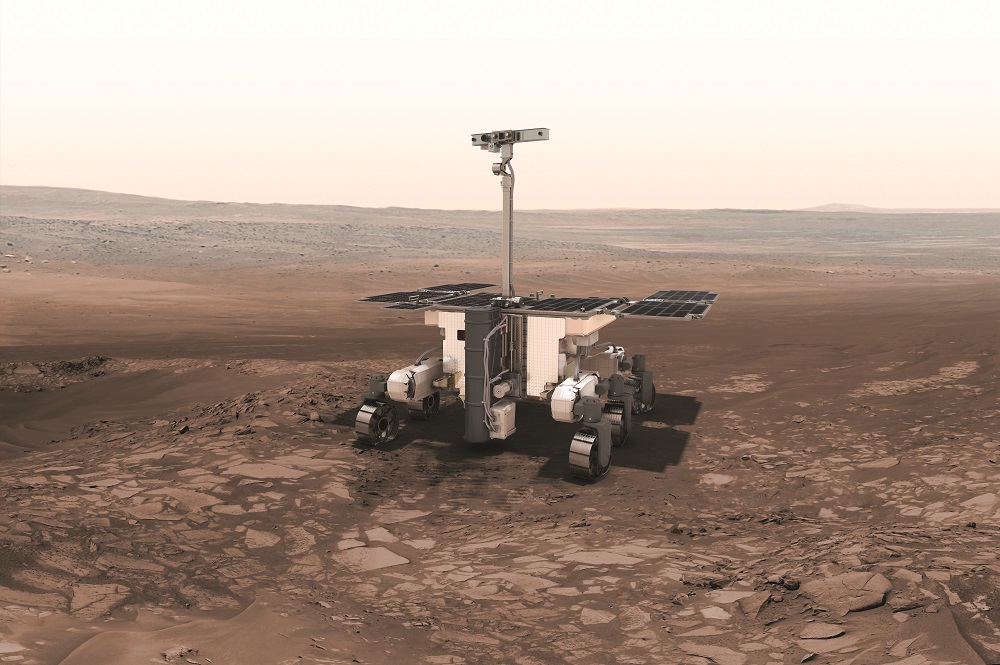WASHINGTON — NASA and the European Space Agency have completed an agreement under which NASA will provide hundreds of millions of dollars of support for a European Mars rover mission.
Officials with NASA and ESA signed the agreement May 16 at ESA’s Paris headquarters, formalizing previously announced cooperation between the agencies on the ExoMars Rosalind Franklin rover mission, scheduled to launch in 2028.
The agreement confirms NASA’s planned contributions to the mission, including throttable braking engines that will be used on a new descent stage being developed by ESA and radioisotope heating units (RHUs), which use heat from the decay of plutonium-238 to keep the spacecraft warm. The RHUs also require a launch from the United States on a vehicle NASA will procure.
The NASA contributions replace elements of the mission originally provided by Roscosmos, which had developed the landing platform for the Rosalind Franklin mission and planned to launch the spacecraft on a Proton in September 2022. However, ESA called off the partnership weeks after Russia’s invasion of Ukraine in February 2022.
ESA is now developing its own landing system for the rover, awarding a contract worth 522 million euros ($566 million) to Thales Alenia Space April 9 to restart work on the mission. The Thales-led team will develop a new landing platform for the rover, with NASA providing the engines and RHUs not readily available in Europe.
“This pivotal agreement strengthens our collaborative efforts for the ExoMars program and ensures that the Rosalind Franklin rover will set its wheels on Martian soil in 2030,” Daniel Neuenschwander, ESA’s director of human and robotic exploration, said in a statement.
The announcement did not disclose the value of NASA’s contributions to the mission. NASA’s fiscal year 2025 budget proposal released in March requested $49.2 million for its work on Rosalind Franklin and projected spending $339 million through fiscal year 2029, a period that goes through the projected late 2028 launch of the mission.
Rosalind Franklin will give NASA another opportunity to participate in a Mars mission at a time when then agency is working to revamp its Mars Sample Return program — also a joint effort with ESA — to address major cost increases and schedule delays. Other than ESCAPADE, a smallsat Mars orbiter mission scheduled to launch as soon as this fall, NASA has no other robotic Mars missions on the books.
“The Rosalind Franklin rover’s unique drilling capabilities and onboard samples laboratory have outstanding scientific value for humanity’s search for evidence of past life on Mars,” Nicola Fox, associate administrator for science at NASA, said in an agency statement.
The announcement did not disclose what additional roles NASA would play on the mission thanks to this contribution. The agency was previously a partner on one of the rover’s instruments, the Mars Organic Molecule Analyzer.
The expectation among Mars researchers is that NASA will gain the opportunity to select members of the Rosalind Franklin science team through a participating scientist program. “That’s typically what we try and do when we’re cooperating with our international partners on missions,” said Lori Glaze, director of NASA’s planetary science division, during a town hall meeting in March at the Lunar and Planetary Sciences Conference. “That’s definitely in the plan.”
